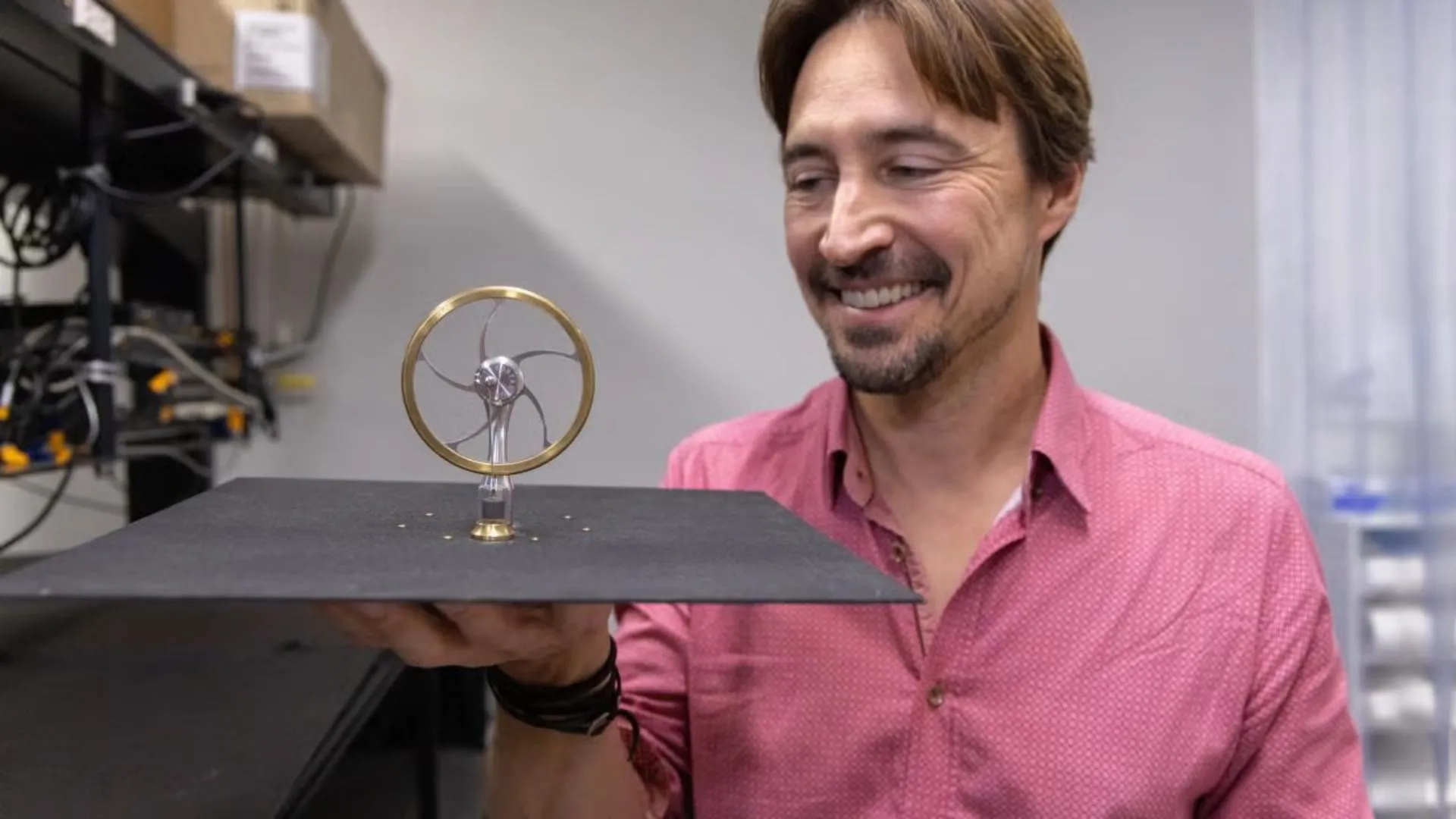Copyright Interesting Engineering

Engineers at the University of California, Davis, have built a small device that produces mechanical power at night by exploiting the contrast between ambient warmth and the extreme cold of outer space. Their prototype shows that a simple Stirling engine, paired with a radiative cooling panel, can run after sunset without fuel. The team says the approach could help ventilate greenhouses and buildings in regions with clear night skies. Power from small temperature gaps The researchers focused on the Stirling engine because it works with small temperature differences. Internal combustion engines need large heat gradients, but Stirling engines can operate with far less. Jeremy Munday, professor of electrical and computer engineering at UC Davis, said, “These engines are very efficient when only small temperature differences exist, whereas other types of engines work better with larger temperature differences and can produce more power.” That distinction guided the design. A standard Stirling engine sits between two surfaces with different temperatures. When both sides share the same temperature, the device does not move. As Munday put it, “If you just set it on the table, it’s not going to produce any power on its own because all sides are the same temperature.” Researchers usually solve this by heating one side. Munday and graduate student Tristan Deppe wanted the opposite. They looked for a colder sink rather than a hotter source. They turned to deep space. The team noted that physical contact is not required. Heat can radiate into the sky. Munday said, “It doesn’t actually have to touch space physically, it can just interact radiatively with space.” He compared it to standing outside on a clear night, when heat leaves the body quickly. Night sky experiments Deppe and Munday mounted a simple Stirling engine on a radiative cooling panel. They placed the setup on the ground, letting the soil serve as the warm side. The panel pointed upward and shed heat straight into the night sky. This created enough of a temperature gap to activate the piston and spin the flywheel. A year of nighttime testing showed that the device could generate at least 400 milliwatts of mechanical power per square meter. The team powered a small fan and connected the system to an electrical motor to produce current. These demonstrations confirmed that night sky cooling can run lightweight machinery without sunlight. The researchers say the system works best in places with low humidity and frequent clear nights. They believe the method could support greenhouse ventilation or household airflow after dark. Such tasks require modest power and could benefit from a source that runs when temperatures drop and plants or buildings need circulation. UC Davis has filed a provisional patent for the technology. The team plans to refine the design and explore larger applications. Their findings show that space can serve as a practical heat sink for nighttime power generation. The study is published in the journal Science Advances.



